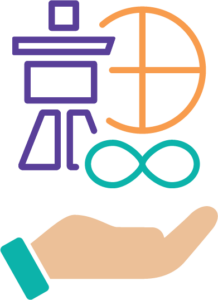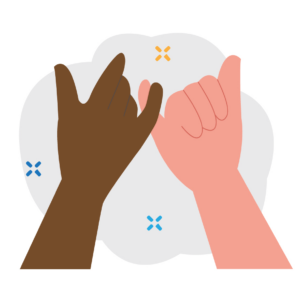Model of Care Toolkit
Informing community engagement
Understanding needs and priorities
 Organizations and individuals within the Canadian healthcare system must commit to learning about the historical and ongoing experiences of First Nations, Inuit and Métis in the land now known as Canada.
Organizations and individuals within the Canadian healthcare system must commit to learning about the historical and ongoing experiences of First Nations, Inuit and Métis in the land now known as Canada.
Reflecting on the following information and concepts is a good place to start:
- First Nations, Inuit and Métis are culturally rich, strong and resilient. They have a right to sovereignty and self-determination, including directing and implementing health services.
- It is important to understand the impact of historical and ongoing colonialism and the trauma inflicted by systemic racism on individuals and communities, particularly during times of stress.
- When working together, it is critical to recognize and understand relevant legislation and principles including the Truth and Reconciliation Calls to Action; the First Nations data governance principles of ownership, control, access and possession (OCAP ®); Inuit Qaujimajatuqangit Principles; Métis research principles and protocols; and existing jurisdictional contexts.
- The Federal government have a fiduciary responsibility for the health of First Nations and Inuit peoples across Canada. Several programs have been put in place – such as the non-insured health benefits program – that seek to address this responsibility. However, there are unique jurisdictional and regional challenges inherent within the current system. Further, current efforts toward supporting health transformation have resulted in opportunities for these issues to be addressed.
- Existing resources such as Ontario Health’s Indigenous Relationship and Cultural Safety Courses help non-Indigenous organizations and teams better understand the intricacies of how these services are delivered and the impact on patients.
Where to start with community engagement
Although these tools are not Indigenous Peoples-specific, they can be adapted to different contexts and communities to start meaningful engagement with community partners:
- International Association of Public Participation (IAP2) Spectrum describes different levels of engagement.
- The Tamarack Institute’s Community Engagement Planning Canvas is a fillable template to help organizations map out their community engagement strategy.
- The Tamarack Institute’s Index of Community Engagement Techniques offers strategies for varying goals of engagement.
- Understanding Co-Design is an Alberta Health Services resource that describes key principles of co-design and provides tangible examples of application in healthcare projects.
Community engagement in action
In 2022, five partners engaged communities to increase colorectal screening rates within their jurisdiction. Their key takeaways may help you get started.
 How to be an ally
How to be an ally
First Nations, Inuit and Métis may be interested in collaborating with non-Indigenous people and organizations to achieve their self-determined health goals. It is the ally’s responsibility to educate themselves to approach any collaboration with humility and respect. As a first step in this education, take a look at the Indigenous Ally Toolkit created by the Montreal Indigenous Community Network.
